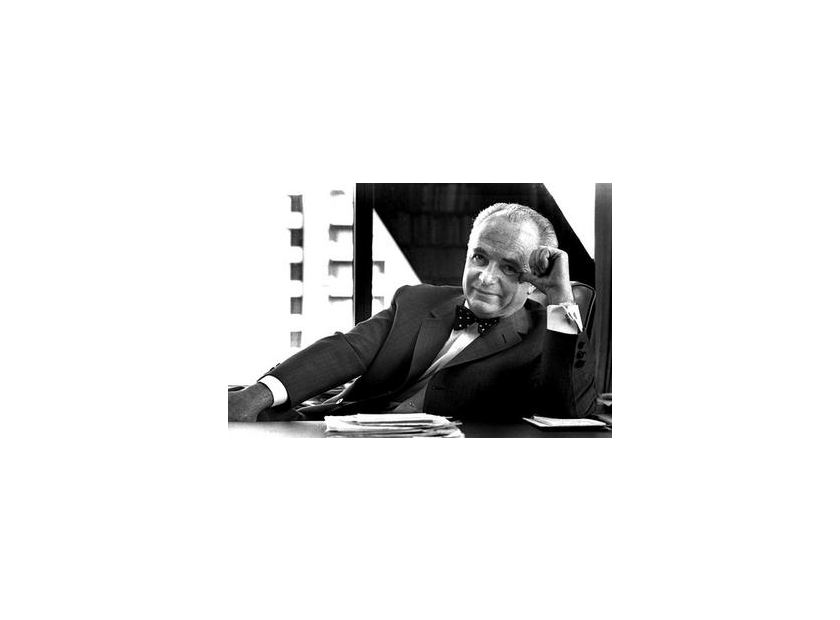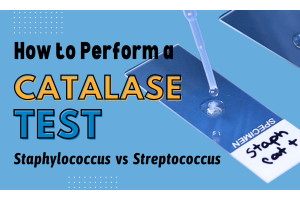The Life of Louis Kelso: Father of the ESOP
“There is no future
for those who cannot or will not think.”
(Louis O. Kelso, In Lectures and Conversation)
Louis Kelso is often credited as the man who invented the ESOP. Hardy Diagnostics owes Louis Kelso a lifetime of gratitude for his ideas as they have helped shaped our company today. The following is a short biography of the man who gave companies back to their employees for decades and continues to do so today.
Louis Ortho Kelso was born on December 4th, 1913.
His early childhood saw the culmination of the Second Industrial Revolution,
the greatest economic growth in history across western society. The
modernization of manufacturing and production technology enabled massive
advancements in technological systems, such as infrastructure and mass transit.
These advancements were pivotal in the First World War, enabling it to become
one of the largest and bloodiest conflicts in history.
In the post-Great War 1920s, the United States gained the leading edge in world finances. The “Roaring 20’s” was the zenith of economic prosperity. Rapid industrial growth, rise in consumer demand, and significant changes in lifestyle and culture saw American businesses cultivate large wealth. The American people now lived in stark contrast to War-era frugality. This opulence was not to last long, however. As the Americans woke up on October 29th, 1929, stocks had plummeted and a decade of prosperity had quite literally ended overnight. “Black Tuesday” as it would be known, was the start of a decade of economic stagnation known as the Great Depression. Millions lost their jobs and the worldwide GDP plummeted by 15%. In comparison, the Great Recession of 2008 only saw worldwide GDP drop of 1%.
It was in 1931, that a young Kelso began to grow interested
in economics. His determination to investigate the true cause of the Great
Depression was fueled by his dissatisfaction with available explanations at the
time. In 1937, he graduated from the University of Colorado at Boulder with a
Bachelor of Science in business administration and finance. The following year,
Kelso earned his Doctorate in Jurisprudence at Boulder and joined the Denver
law firm Pershing, Bosworth, Dick, and Dawson. Kelso worked for the firm from
1938 until 1942. He might have stayed with the firm longer if it had not been
for one fateful December morning.
On December 7th, a surprise preemptive military attack was launched by the Imperial Japanese Naval Air Service on Pearl Harbor Naval Base in Honolulu, Hawaii. This offensive left 2,403 Americans killed, 1,143 wounded, and the American Navy in the Pacific crippled. The United States had hoped economic pressure through embargos of fuel and steel would deter Japanese Imperial expansion throughout the Pacific while allowing them to retain their neutrality in the War. However, the attack on Pearl Harbor had forced the hand of the “sleeping giant”. The United States declared war on Japan, who had done the same on the day of the attack. Germany and Italy would stand in solidarity with their Japanese allies, declaring war on the United States on December 11th with the United States following suit mere hours later. The United States had officially entered the Second World War alongside its British, Russian, and Chinese allies.
Soon after, Louis Kelso was commissioned by the United
States Navy and given an intelligence assignment in San Francisco. He would
later be assigned to the Canal Zone in Panama. It was during this time, during
his free afternoons, that he would begin to write his influential work, The Fallacy of Full Employment.
Years passed and as the Second World War ended, Kelso was honorably discharged by the Navy in 1946. With his manuscript finished, Kelso was excited to share his ideas with the world, however, with the passing of the Full Employment Act of 1946, Kelso decided that his manuscript, with its controversial conclusion, was not ready for the public.
After a brief stint teaching Constitutional Law at his alma
mater in, Kelso moved to San Francisco once more, but this time to become a full
law partner. It was during this time with the firm Kelso, Cotton, Seligman, and
Ray that Kelso would begin the work on what would become his legacy. Even so,
it simply was not enough.
In 1956, Kelso was contacted by Gene Bishop, who had been Kelso’s Commanding Officer in the Navy and was now Vice President at Peninsula Newspapers Incorporated. The original owners of PNI wished to retire but did not want to sell their paper to William Randolph Hearst, the media mogul who had developed the nation’s largest media chain, Hearst Communications. The employees echoed this sentiment. The employees wanted to own the paper they loved. Bishop was spearheading the effort on the employees’ behalf. The employees tried to pool their resources, dipping into savings accounts, attempting to take second mortgages on their homes, garnering investments from friends and relatives, all in an attempt to accrue the necessary capital to purchase the company.
The bank found that the employees could only scrape enough money to cover the interest, but not the principle to buy the paper. The employees refused to allow the paper to become the property of Hearst or others like him, so instead Bishop turned to Kelso for advice. The next day, Kelso came to Bishop with a solution that sounded too good to be true. The employees would pay for their ownership of the company out of the company’s future earnings. These profit-sharing trusts were credited with share ownership as the trusts paid off the loans. This meant the retiring owners were bought out in full, and by 1974 the newspaper had gone on to report shareholder equity of more than $6 million. Kelso had invented the ESOP or Employee Stock Ownership Plan.
Throughout the 1960s and 1970s, Kelso helped establish more of these buyouts, at the time known as "Kelso Plans." As he rubbed shoulders with some of the world’s most powerful and wealthy men, he secretly loathed the classism of post-war capitalism. “The trouble with today’s techniques of finance is that they’re designed to make the rich richer. None are designed to make the poor richer. That’s why the poor are poor. Because they’re not rich.” To Kelso, capitalism was plagued through the maldistribution of income. The rich got richer as they enjoyed the benefits of capital ownership, while the non-rich barely survived, living off of the fruits of their labor. As automation increased, more workers would lose the only bargaining chip they had at the table: their necessary labor. Kelso, however, did not approve of social redistribution of wealth as seen in socialist models, stating “Socialism has been discredited. Plutocracy is in the process of being discredited. Democratic capitalism has yet to be tried.” In his mind, the only solution to capitalism’s primary fault was to broaden the scope of capital ownership.
With newfound momentum, he continued to work on his manuscript while also promoting his “Kelso Plans,” all in an attempt to spark a “capitalist revolution” within the business world. He continued to lobby to Congressmen, economists, and politicians. Barry Goldwater, Richard Nixon, and Gerald Ford were all approached by Kelso and all politely listened to Kelso’s impassioned rhetoric but ultimately none were moved to any action.
Finally, Kelso was introduced to Russell Long. Long was
chairman of the Senate Finance Committee and son of Huey Long. Nicknamed the
“Kingfish” Huey Long served as the 40th governor of Louisiana and
famously touted the phrase “every man a king” as he promoted his Share Our
Wealth plan to stimulate the economy. While Russell Long might not have been
the opponent to the rich as his father had been, he was a brilliant politician
with populist leanings.
During the hours of their introductory dinner, Kelso found he had finally won an ally. As their meal concluded, Long simply asked, “Now what can I do for you?” Kelso knew he needed someone to bring his ideas before the Legislature. More than that, he needed his ideas to become law so his capitalist revolution could finally begin.
Due to Long’s influence, ESOP legislation became a frequent talking point in Washington with small pieces being written into legislative initiatives over the years. The breakthrough for ESOP’s came in 1974 with the passing of the Employee Retirement and Income Security Act (ERISA). This landmark legislation governed company-sponsored retirement accounts. ERISA not only made Kelso Plans more viable, but also made them easier to implement. ERISA was just the start. Long would go on to write many more ESOP relegated legislation pieces that either altered ERISA or tax code to benefit ESOP ideals.
Many years later, Long would include one of the hallmark reasons for many ESOPs creations. A provision for the deferral of taxes on the sale of private stock to an ESOP was thrown in at the last second before passing the Legislative branch. To this day, this remains one of the key incentives for company owners to switch to an ESOP model.
For his part, Louis Kelso would continue to be an advocate
for Employee Ownership. He would spend the rest of his years giving speeches,
authoring books, and writing articles around the idea that capital ownership
should not be held and kept only for the lucky few. Louis Kelso would continue
his work up until his death in February of 1991. He was 77 years old when he
passed.
“People are hungering
for property — for a secure, permanent and independent link with spaceship
earth that ownership represents and which only ownership can protect or defend.
It is humiliating to possess nothing, to own nothing, and hence to produce
nothing and to count for nothing.”
(Louis O. Kelso and
Patricia Hetter, Washington Post, June 18, 1972)
At Hardy Diagnostics, we are celebrating our fourth year as a 100% Employee-Owned company.
While Hardy Diagnostics may have arisen from humble
beginnings with only two employees, for 40 years Hardy Diagnostics has grown
and flourished to over 400 partners! Jay Hardy, President and Found of Hardy
Diagnostics, being of entrepreneurial spirit, wanted to instill the blessing
and responsibility of business ownership in his employees.
The Hardy Diagnostics ESOP was created in 2012, and in October 2015, Mr. Hardy sold the remainder of his majority share in Hardy Diagnostics back to his employees. Hardy Diagnostics now operates as a 100% Employee Owned ESOP.
We do not answer to private investors or venture capitalists. We operate as a company of owners who only answer to our customers and their needs. We are proud in knowing our daily work is helping healthcare professionals and technicians diagnose and prevent disease. We love what we do, and just like Peninsula Newspapers Inc... we would never sell our company. You cannot put a price on purpose.
Written by Daniel Ballew, Digital Marketing Specialist for Hardy Diagnostics







